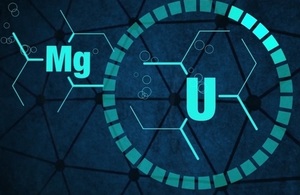Research breakthrough to accelerate Sellafield decommissioning
A breakthrough in the management of nuclear waste is set to accelerate progress at Sellafield and save hundreds of millions of pounds.

Illustration of the research into chemical behaviours of Intermediate Level Waste (ILW)
Scientists studying intermediate level waste (ILW) in one of the site’s historic stores have unearthed previously unknown information about the material’s long-term behaviour.
The discovery points the way to a radically simplified approach to the packaging and disposal of ILW that will see significant reductions in the timescales and costs associated with decommissioning redundant nuclear facilities.
The research focused on the chemical behaviours of ILW stored in the Magnox Swarf Storage Silo – one of the UK’s most hazardous buildings, which has been prioritised for clean-up by the NDA. Previously, a 22-step mechanical treatment and encapsulation process was thought necessary to manage and ultimately dispose of ILW stored in silos constructed over 50 years ago.
But the study’s findings suggest that theory could be swept away and replaced with an alternative 3-step solution which stores the waste ‘raw’ with concrete grout inside a shielded container. Switching to this new method could speed up the decommissioning of the silo by several years and provide huge savings to the taxpayer. The technique could also be applied to other redundant nuclear facilities in the UK and around the world.
Dr Adrian Simper, the NDA’s Strategy and Technology Director, said:
This research has delivered the underpinning to what could be a paradigm shift in the management of nuclear waste. Having a greater understanding of the long-term behaviour of this material allows us to design a truly fit-for-purpose approach to its management and disposal.
To be able to deliver a technical solution to historic ILW at Sellafield, which not only offers a safe and secure route but also opens up the possibility of a quicker and cheaper alternative to current technology, is a genuinely exciting development.
The 4 year study was led by the NDA, Sellafield Ltd and the National Nuclear Laboratory, with academics from the universities of Bristol, Leeds and London South Bank. It focused on the corrosion behaviours of magnesium and uranium and shed new light on the hazards these materials pose to people and the environment in the long term.
As a result of this work scientists now believe a safe and secure waste package can be produced using a far more straightforward approach. The waste package would be suitable for interim storage at Sellafield and then, once grouted, final disposal in a UK geological disposal facility.
Radioactive Waste Management, the organisation responsible for developing a geological disposal facility for higher activity wastes, has confirmed that once finished and finally grouted, the waste packages would meet the acceptability criteria for disposal.
An added benefit of the alternative approach is the reduction in ‘secondary wastes’ created during the treatment phase, resulting in an estimated 10 per cent fewer waste packages being produced during the decommissioning of MSSS.
Paul Foster, Managing Director of Sellafield Limited, said:
Although this new approach has resulted in Sellafield Ltd no longer needing to progress the SDP project, I want to commend a.m.a. – the contractor leading the SDP project - for demonstrating excellent leadership throughout their time working for us.